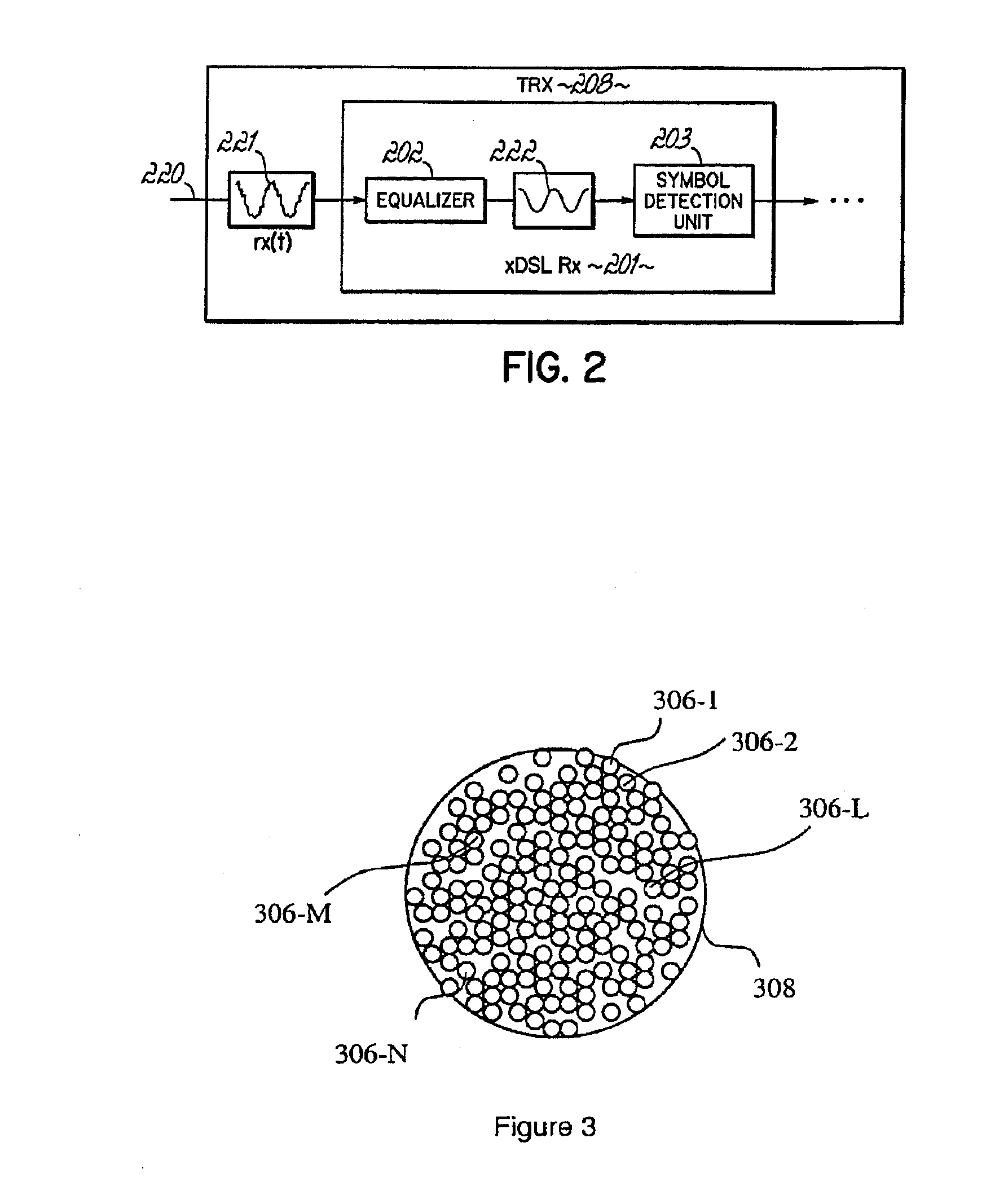Mitigation of Interference and Crosstalk in Communications Systems
a technology of communications system and interference, applied in the field of communication system interference and crosstalk mitigation, can solve the problems of shortening the signal clarity is short, and certain limitations of the communication system, so as to shorten the distance at which the signal can be reliably received
- Summary
- Abstract
- Description
- Claims
- Application Information
AI Technical Summary
Benefits of technology
Problems solved by technology
Method used
Image
Examples
Embodiment Construction
[0043]For purposes of discussing and illustrating the invention, several examples of the invention will now be given in the context of a wireline communication system, such as xDSL. However, one skilled in the art will recognize and appreciate that interference, for example, crosstalk, is a problem in wired and wireless communications and that the techniques disclosed are applicable in these areas as well.
[0044]In the following description, for purposes of explanation, numerous specific details are set forth in order to provide a thorough understanding of the present invention. It will be evident, however, to one skilled in the art that the present invention may be practiced without these specific details. In some instances, well-known structures and devices are shown in block diagram form, rather than in detail, in order to avoid obscuring the present invention. These embodiments are described in sufficient detail to enable those skilled in the art to practice the invention, and it...
PUM
 Login to View More
Login to View More Abstract
Description
Claims
Application Information
 Login to View More
Login to View More - R&D
- Intellectual Property
- Life Sciences
- Materials
- Tech Scout
- Unparalleled Data Quality
- Higher Quality Content
- 60% Fewer Hallucinations
Browse by: Latest US Patents, China's latest patents, Technical Efficacy Thesaurus, Application Domain, Technology Topic, Popular Technical Reports.
© 2025 PatSnap. All rights reserved.Legal|Privacy policy|Modern Slavery Act Transparency Statement|Sitemap|About US| Contact US: help@patsnap.com



